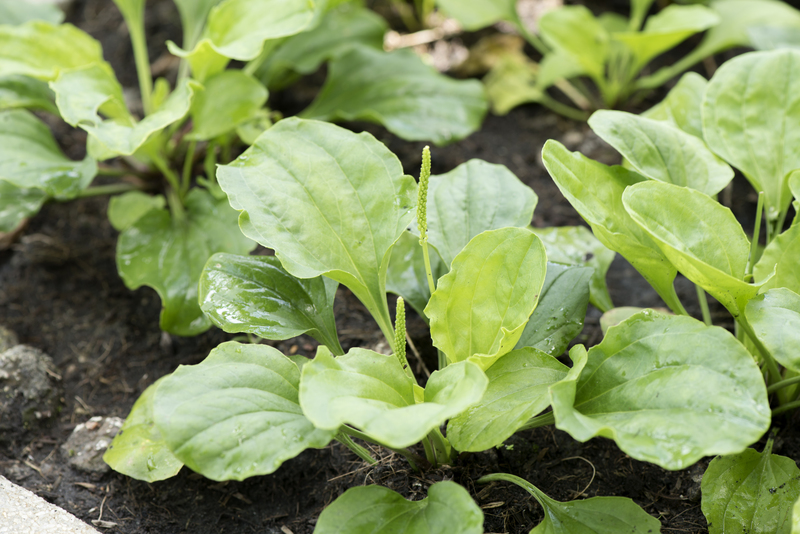From Gardens to Global Impact: Cultivating Climate Solutions
Posted on 02/07/2025
From Gardens to Global Impact: Cultivating Climate Solutions
In today's world, the fight against climate change is no longer reserved for governments, scientists, and corporations. Every individual and community has a role to play in nurturing a healthier planet. From your backyard vegetable patch to massive urban reforestation efforts, cultivating climate solutions begins in the most unexpected places--gardens. This article explores how gardening for climate solutions ignites change on a global scale, offering actionable tips, inspiring stories, and a comprehensive look at the journey from local initiatives to worldwide environmental impact.
Understanding the Powerful Connection: Gardens and Climate Change
How can the simple act of gardening influence climate action on a global level? The answer lies in a blend of biology, community engagement, innovation, and systems thinking. Here's why:
- Carbon Sequestration: Plants, from towering trees to humble herbs, absorb carbon dioxide--a major greenhouse gas--directly from the atmosphere.
- Soil Health Restoration: Healthy soil acts as a carbon sink, supporting rich biodiversity and improving climate resilience.
- Biodiversity Support: Gardens foster insects, birds, and microorganisms, strengthening ecosystems against climate disruption.
- Urban Heat Island Reduction: Green spaces cool cities, lowering energy needs and emissions.
- Food Security: Growing food locally reduces transportation emissions and supports sustainable supply chains.
These impacts demonstrate how climate-positive gardening doesn't just beautify our surroundings--it acts as a strategic lever in the broader push to combat global warming.

The Rise of Sustainable Gardening Practices
As climate awareness grows, so does the adoption of regenerative and sustainable gardening methods. Are you interested in transforming your home or community space into a climate resilience powerhouse? Here are key strategies to consider for climate smart gardening:
1. Embrace Native and Adaptive Plants
- Drought-Resistant Varieties: Native plants generally require less water, fertilizer, and care, making them more resilient to climate extremes.
- Biodiversity Boost: Adding a diverse range of flora supports pollinators and natural pest control, enhancing ecosystem strength.
2. Composting to Enhance Soil Carbon
- Composting kitchen and yard waste returns valuable nutrients to the soil, increasing its carbon-storing capacity.
- This reduces methane emissions from landfills while creating a cycle that nourishes future plants.
3. Water Conservation Techniques
- Rain Barrels: Collect runoff from roofs to use on garden beds, cutting water usage and preventing soil erosion.
- Drip Irrigation: Delivering water directly to roots minimizes evaporation and waste.
4. No-Dig Gardening
- Soil Preservation: Minimizing disturbance maintains soil structure, supports beneficial microbes, and limits carbon loss.
- Reduced Labor: Healthier soil means less weeding, watering, and fertilizing.
By implementing these practices, gardeners transform ordinary green spaces into climate solutions at both the local and broader levels.
Community Gardens: Collective Action for Climate Impact
The shift from individual to collective gardening multiplies the climate benefits exponentially. Community gardens have emerged across urban and rural landscapes, providing a hands-on means of fighting climate change while improving communities' wellbeing.
How Community Gardens Cultivate Climate Solutions
- They transform blighted areas into green oases, combating urban heat islands and air pollution.
- Shared plots encourage educational opportunities and local food production, reducing carbon footprints.
- They foster inclusivity, collaboration, and stewardship, empowering residents to tackle climate issues together.
Case Study: In Detroit, once-abandoned lots now pulse with life, as hundreds of community gardens not only supply fresh produce but have also cooled neighborhoods and boosted local biodiversity. Similar stories abound from San Francisco to Nairobi, showcasing the global ripple effects that start with a single garden bed.
Regenerative Agriculture: Scaling Gardens to Fields
While home and community gardens set the stage, scaling up these principles--known collectively as regenerative agriculture--unleashes even greater potential for carbon drawdown and resilience.
What is Regenerative Agriculture?
- It's a holistic approach emphasizing soil health, biodiversity, water management, and minimal chemical input.
- Tactics include cover cropping, agroforestry, rotational grazing, and perennial planting.
- The result? Farms become net carbon sinks, biodiversity flourishes, water cycles improve, and communities thrive.
According to Project Drawdown, shifting even a fraction of global farmland to regenerative practices could sequester gigatons of carbon dioxide, making a measurable difference against the climate crisis.
Climate Solutions Through Urban Greening
Cities, as centers of energy use and emissions, are pivotal in the quest for climate action. Urban gardens, green roofs, vertical farms, and pocket parks are revolutionizing how we think about city life's ecological impact.
- Urban gardens provide fresh produce, shade, and cleaner air in dense neighborhoods.
- Green roofs insulate buildings, reducing energy demands and capturing rainfall.
- Vertical farming maximizes limited space for hyper-local, low-footprint food production.
Tech-driven innovations--from smart irrigation sensors to AI-powered crop planning--amplify these solutions, making cities more livable and climate-resilient for millions.
Measuring the Global Impact: Gardens as Part of the Climate Solution
Can backyard gardens really move the needle on global climate goals? While a single patch may seem minor, millions of gardens worldwide collectively make a difference.
- Reduced Emissions: Local food cuts transportation emissions.
- Enhanced Carbon Sinks: Healthy plants and soil capture atmospheric carbon.
- Community Engagement: Gardening educates and inspires climate action beyond the garden fence.
- Scaling Up: Gardens often launch bigger projects--green corridors, reforestation, sustainable agriculture.
Global solutions grow from local roots. From millions of home growers to national policies, the aggregate effect is a wave of change, nourishing both the planet and its people.
Practical Steps to Cultivate Climate Solutions at Home
1. Start Small, Think Big
It all begins with a single seed:
- Dedicate a corner of your yard or a few containers to herbs, vegetables, or pollinator-friendly flowers.
- Opt for organic, local seeds and materials whenever possible.
- Encourage your neighbors and friends to join in--community amplifies impact!
2. Prioritize Perennial Plants
Perennials like berry bushes, fruit trees, and some vegetables require less maintenance than annuals, support rich ecosystems, and store more carbon year after year.
3. Minimize Chemical Use
- Choose natural pest controls, such as neem oil or companion planting, to protect helpful bugs and soil life.
- Let fallen leaves and plant debris feed your soil and shelter overwintering insects.
4. Compost More Than You Think
- Kitchen scraps, coffee grounds, shredded paper, even hair clippings--these can all enrich compost and the climate.
- Share or trade compost with neighbors or community gardens to increase reach and benefits.
5. Educate and Advocate
Take your knowledge to the next level:
- Host workshops or garden tours focusing on climate-friendly gardening techniques.
- Partner with schools, nonprofits, or local government for broader climate initiatives.
Global Movements and Policy Connections
Beyond the garden gate, climate solutions depend on supportive policy and large-scale action. Fortunately, momentum is growing worldwide:
- The United Nations Food and Agriculture Organization actively promotes agroecology for climate resilience.
- Networks like The Global Soil Partnership unite governments and citizens to protect soil health.
- Urban agriculture incentives in major cities provide grants and resources for sustainable green spaces.
By engaging with these initiatives, individuals and communities ensure their efforts align with--and amplify--global climate strategies.
Inspiring Success Stories: Local Roots, Worldwide Reach
Singapore's Skyrise Greenery
With limited land, Singapore pioneered vertical gardens and green roofs, turning its skyline into a living ecosystem. These innovations drastically reduce urban heat, improve air quality, and create habitats for birds and insects.
French Urban Farms Combat Food Deserts
In Paris and other cities, rooftop and community gardens supply fresh produce and climate education in underserved neighborhoods--demonstrating how local food can tackle both social and environmental challenges.
African Regreening Initiatives
A grassroots movement across the Sahel region has restored millions of acres of degraded land using farmer-managed natural regeneration, boosting food security, livelihoods, and climate resilience.

The Road Ahead: Cultivating Climate Solutions for Future Generations
The journey from home gardens to global climate impact is more than possible--it's happening now. As more people embrace gardening for climate action, new opportunities for innovation and community transformation emerge. The seeds sown today won't just feed families or beautify neighborhoods--they will anchor climate solutions for generations to come.
Your garden is not just a patch of dirt. It is a living piece of the climate solution puzzle. By cultivating sustainably, sharing knowledge, and connecting with broader initiatives, you become not just a gardener, but a local--and global--climate hero.
Conclusion: From Soil to Sky, Gardens Grow Global Change
In the quest to address climate change, every action counts. From tending a single tomato plant to joining vast reforestation efforts, we each can contribute to climate solutions that resonate far beyond our backyards. As you plan your next garden, remember: You're growing not just food or flowers, but hope, resilience, and a greener, cooler, more sustainable world for all.
Join the movement. Cultivate change. From gardens to global impact, the earth is in your hands.

